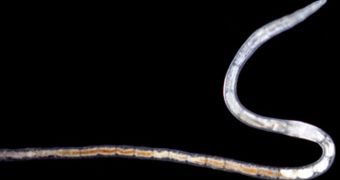As marine scientists know, the ocean floor is home to a vast number of creatures, representing just as many species. It is estimated that this level of the world's water encompasses a large part of the biodiversity present in the seas and oceans. Investigations of marine evolutionary hot beds, such as coral reefs, is almost always bound to produce immediate results, and a recent study by scientists at the University of Gothenburg was no exception. Led by researcher Pierre De Wit, the group discovered new species in the Great Barrier Reef, in the sea off the Gullmarsfjord in the Swedish county of Bohuslan, and in New Caledonia, AlphaGalileo reports.
The new investigation was conducted on the class of annelid worms called Clitellata, and more specifically on the genus Grania. These are worms about two centimeters in length, whitish in color, which live throughout the oceans, both near the surface and in the deep sea. De Wit and his team, all based at the UG Department of Zoology, wanted to investigate precisely how many species of the creature there are. Another goal of their research was to understand how these organisms are related to others, similar to them in appearance.
While conducting research at the site of the Great Barrier Reef, in Australia, De Wit and his colleagues discovered four new species of Grania worms, including one that was green, called Grania colorata. The researchers were intrigued about this finding, which breaks the regular pattern. “These worms are usually colorless or white, and we have not been able to work out why this particular species is green,” says De Wit. ”Species that were previously regarded as the same may prove to have a completely different function in the ecosystem, and have different tolerance of environmental toxins, for example. It is obviously important to know this in order to be able to take the right action to protect our fauna,” the expert adds.
Investigations conducted on the ocean floors around Scandinavia revealed another previously-unknown species of the worm, called Grania occulta. This creature looks exactly the same as another type of the worm, and researchers say they can only distinguish the two based on analysis of their respective DNA. They add that, in this case, one of the worms actually has a more common origin with a third type of Grania than with the one it resembles. In other words, the two, similar-looking species took varied evolutionary roads to reach the same appearance.

 14 DAY TRIAL //
14 DAY TRIAL //